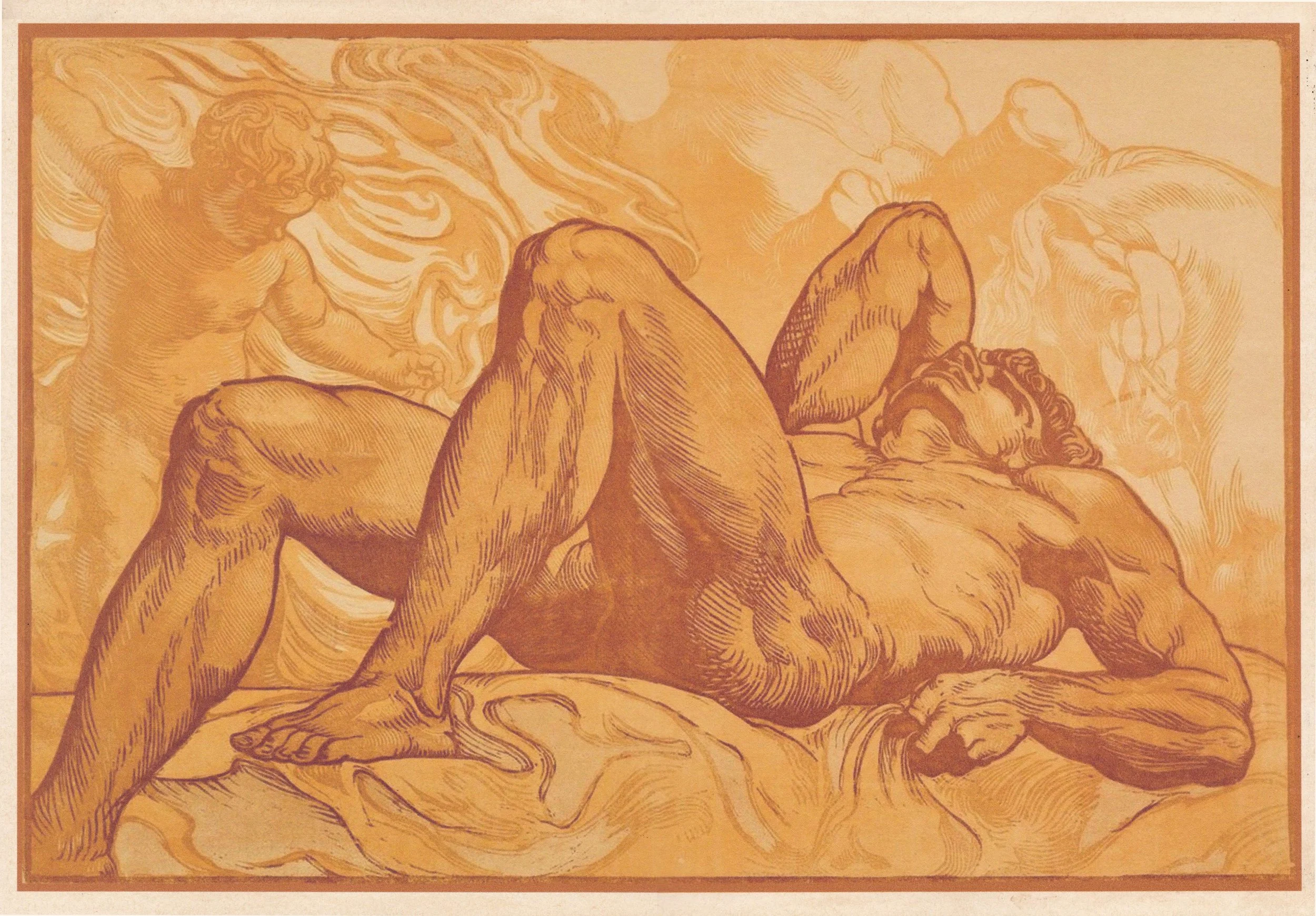Adolfo De Carolis Fallen Giant 1925
Adolfo De Carolis Fallen Giant 1925
Adolfo De Carolis Fallen Giant
Male Nude (The Fallen Giant) 1925 (Il Gigante Caduto) Yellow brown version.
A recently printed scarce archival quality inkjet print, of the iconic woodcut by Adolfo de Carolis, on thick art paper.
Artwork size: 27.5 x 40.75 cm, full sheet size 29.75 x 42 cm.
Sold without the frame and matt mounting. This will fit into a standard A3 matt or frame, but as the margin at the top and bottom are slightly thicker, we suggest a custom-cut matt mount to fit more evenly.
"The destruction of beauty now proceeds with great strides from the cities to the countryside, nor will it be worth then affixing marble tables in memory; by now the land that welcomed heroic spirits will be equal to many other lands" – Adolfo De Carolis, 1903
Adolfo De Carolis (Montefiore dell'Aso, 6 January 1874 - Rome, 7 February 1928) was one of the most important artists of his time: painter, illustrator and photographer; he left works of considerable importance, such as the frescoes in the Palazzo del Podestà in Bologna, the Palazzo della Provincia in Arezzo, the Palazzo del Governo in Ascoli Piceno and the Basilica of Sant'Antonio (chapel of San Francesco) in Padua.
He was also a great xylographer, one of the greatest in terms of technique and taste: master of Bruno da Osimo and Antonello Moroni, among other essays. In 1924, he wrote one entirely dedicated to this art which he favoured for its characteristics of sobriety, simplicity and conciseness (obviously about the final result, not to the technique...). Piersandra Dragoni on the occasion of the exhibition at the Polo Museale San Francesco - Montefiore dell'Aso. Adolfo De Carolis: the untrembling hand of a large xylographer — with Corrado Corradetti.
"La distruzione della bellezza ormai procede a grandi passi dalle città alle campagne, nè varrà poi apporre delle tabelle marmoree in ricordo; ormai la terra che accolse spiriti eroici sarà eguale a tante altre terre" – Adolfo De Carolis, 1903
Adolfo De Carolis (Montefiore dell'Aso, 6 gennaio 1874 - Roma, 7 febbraio 1928) è stato uno degli artisti più importanti del suo tempo: pittore, illustratore e fotografo ha lasciato opere di notevole rilevanza come gli affreschi del Palazzo del Podestà di Bologna, del Palazzo della Provincia di Arezzo, del Palazzo del Governo di Ascoli Piceno e della Basilica di Sant'Antonio (cappella di San Francesco) di Padova.
E' stato anche un grande xilografo, uno dei più grandi per tecnica e gusto: maestro di Bruno da Osimo e Antonello Moroni, fra gli altri saggi nel 1924 ne ha scritto uno interamente dedicato a questa arte da lui prediletta per le sue caratteristiche di sobrietà, semplicità e sinteticità (ovviamente in riferimento al risultato finale, non alla tecnica...). Piersandra Dragoni in occasione della mostra presso il Polo Museale San Francesco - Montefiore dell'Aso. Adolfo De Carolis: la mano che non trema di un grande xilografo — con Corrado Corradetti.



